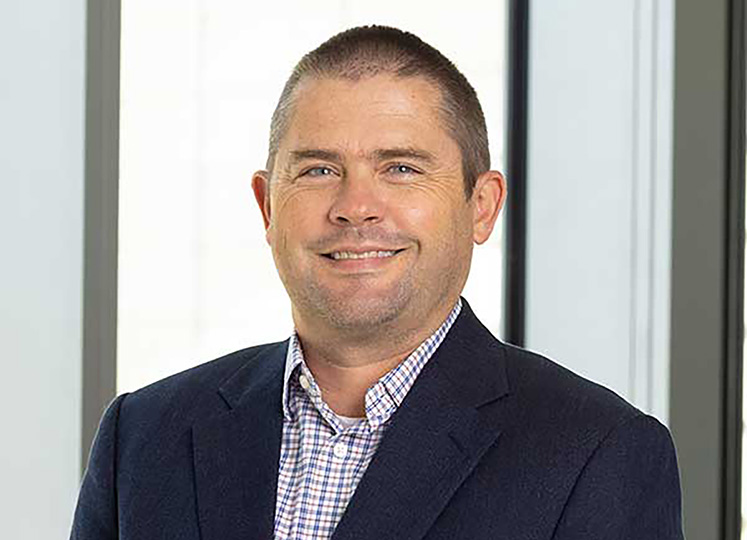A University of Houston optometry professor has his sights set on an uncommon innovation for an equally uncommon visual disorder, and the answer may lie in revolutionizing one of society’s most common accessories.
That accessory, you ask? Contact lenses, which are used by roughly one in six Americans – about 45 million people in all. These can be used to manage corneal ectasia, which refers to a group of eye disorders that cause the cornea to thin and bulge, ultimately impairing vision to the point of permanent vision loss if left untreated.
UH associate professor of optometry Jason Marsack has zeroed in on a pioneering approach to optical correction that is set to revolutionize the way contact lenses are designed and used. By leveraging wavefront aberration measurements, his research aims to move beyond the limitations of traditional lens prescriptions.
This advancement not only promises enhanced visual clarity for patients with corneal ectasia but also challenges current manufacturing norms.
Optical Correction for Special Populations
Marsack is a scientist and engineer whose work in applied and translational optical research related to vision corrective strategies has spanned his own doctoral studies to becoming a member of the UH faculty.
Since joining UH 22 years ago, Marsack’s interests have evolved from a deep interest in the theoretical aspects of optical correction to a strong desire to see these innovations implemented in clinical settings.
“My personal trajectory has evolved from an interest in the early days in the lab and ‘can it be done,’ and now I’m turning towards ‘I want this to be not just available in a handful of clinics, but to be accessible to any patient that might benefit,’” he said.
Marsack has been particularly focused on individuals with corneal ectasia, which leads to an increase in optical aberrations of the eye. These conditions often present unique challenges during the eye exam process, both for the patient and the doctor.
Traditional methods of assessing and correcting vision can be challenging for ectasia patients due to the subjective nature of evaluating optical corrections in the clinic.
“We’re really trying to take some of the subjective nature in prescribing optical corrections out of the process,” Marsack said.
His work involves using objective measures of the eye to develop corrections tailored to each patient’s unique optical needs. This approach allows for the creation of custom lenses that can improve visual quality for these patients.
Innovative Solutions for Complex Vision Needs
Traditional contact lenses are often produced based on generalized prescriptions that may not address individual aberrations, leading to suboptimal results for some patients. Marsack's use of objective measurements allows for the creation of highly customized lenses tailored to each patient's unique optical profile.
This shift from subjective to objective correction techniques has the potential to significantly improve patient outcomes.
“It’s been a long time… but the field is now seeing some of these solutions, as demonstrated in our lab, other academic research labs, and in industry breakthrough into the clinic, so it’s really exciting,” Marsack said.
He envisions a future where a host of custom correction strategies are readily available in a wide range of clinics, providing increased options and improved client-specific care for patients with complex visual needs.
Impact on Manufacturing Processes
The introduction of highly customized lenses may require changes in manufacturing processes. Currently, mass-produced lenses are designed for broad populations, but Marsack’s innovations could lead to a shift towards more personalized production methods. This might involve modern technologies and equipment to accommodate custom measurements, potentially leading to advancements in lens manufacturing and materials.
Marsack was quick to credit the support of colleagues and his team, as well as the resources offered to him at UH for the progress made and the progress to come.
“The lab work, patents, and everything else that we have done here has been a team effort from the beginning,” Marsack said. “We are part of a large community of investigators at UH and elsewhere, both in industry and academics, who are dedicated to achieving this goal. For me, the collaborative environment at UH has been instrumental in pushing the boundaries of optical correction and pushing innovative solutions toward clinical practice. In all my time at UH, I have never asked for help from a colleague and been told no. The answer is always yes. It really is a blessing.”
As someone who has spent over two decades in visual optics research, Dr. Marsack offers valuable advice to graduate students. “Getting one’s Master’s and Ph.D. is a very special time, you are working extremely hard on a problem that is meaningful to you, so make the most of that time,” he said. “Meet as many people as you can and talk to as many people as necessary to get the best information you can to make your work successful.” He also encouraged students to keep an eye on the future and where they’re headed, and reminds them of the importance of persistence in research.
Looking Ahead
Marsack’s commitment to improving optical care for patients with corneal ectasia continues to drive his research. “My personal hope is that as a field, we keep pushing forward to solve the problems of individual patients,” he said.
Thanks to Marsack, optical correction won’t be seen as a one-size-fits-all solution, but rather a precise science that changes lives with persistence, collaboration, individualized treatment plans and a commitment to evolving research.
It’s not just the latest revolution in a UH lab. It is a 20/20 vision for the future of optical care.
